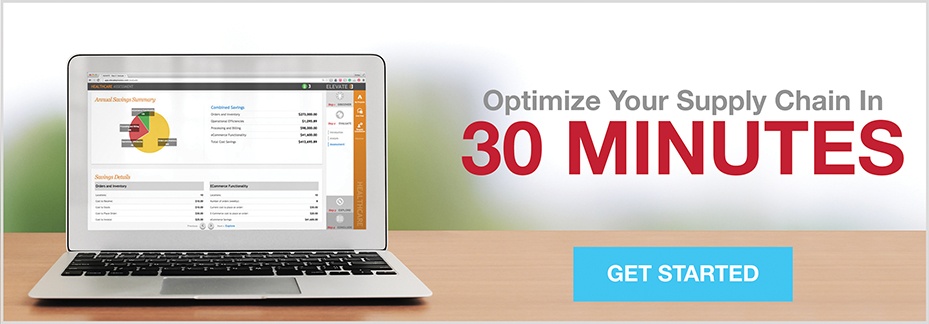 In a lot of ways, a supply chain is almost like a living, breathing entity - something that negatively affects one area of the chain will absolutely create a ripple effect in other areas. This is a lesson that many businesses across the United States have recently learned (or reaffirmed) the hard way, after being slammed by not one but three major hurricanes.
In a lot of ways, a supply chain is almost like a living, breathing entity - something that negatively affects one area of the chain will absolutely create a ripple effect in other areas. This is a lesson that many businesses across the United States have recently learned (or reaffirmed) the hard way, after being slammed by not one but three major hurricanes.
Think about it from a macro perspective: an event like Hurricane Harvey didn't just mean temporary business closures. For supply chains in particular, it means suppliers scrambling to find viable last minute routes. It means businesses trying to find new suppliers. It means delays and losses that some organizations are never going to recover from.
Because of this, more businesses than ever are taking a cold, hard look at their current contingency plans in recent weeks. Based on what organizations around the country have learned from the recent hurricanes in particular, there are a few key elements that you need to add to your existing risk management plans to reinforce and solidify operations.
1. Plan For The Short and Long Term
One of the most important adjustments that must be made to your supply chain risk management plan involves opportunities to not only look at the short-term effects of certain disasters, but the long-term ramifications as well.
Take hurricanes, for example, and one of the most obvious short-term effects that they cause: road closures. While this does present a challenge today, that risk isn't eliminated as soon as the storm itself is over - far from it. According to research conducted by Resilinc, if the roads leading up to particular sites begin to flood in the early hours of an impending storm, this usually results in one to four weeks on average of long-term disruption. If the site itself floods, that number jumps from three to six months on average.
Thinking about the immediate effect of a disaster in terms of risk management will always be important - but never forget that the story playing out doesn't stop just because the rain does the same. Only by taking both a macro and a micro look at every possibility will you put yourself and your organization in the most agile position possible to accurately respond.
2. Collaborate, Collaborate, Collaborate
Another ways to update your supply chain risk management contingency plan involves eliminating one of the biggest mistakes that most organizations make in the first place: creating your response plan in a vacuum.
This is an especially important lesson in the wake of Hurricane Harvey, which impacted such a massive area at one time that virtually nobody was left unaffected. Don't forget that your supply chain doesn't exist simply within the context of your own business - you have a symbiotic relationship with everyone else up and down the line.
Because of this, your response plan cannot be developed in isolation and you should be contacting other supply chain stakeholders to create a much more holistic response to these types of situation. When a single business attempts to prepare a risk management plan on their own without contacting anyone else, there are far too many variables at play. Each firm's risk tolerance will vary wildly from the next. Without this information, how can you ever hope to develop the complete plan you need.
The answer is simple: you can't.
3. Prepare Questions and Sources
But perhaps the most important consideration to make in terms of supply chain risk management is a factor that can either be your best friend or your worst enemy depending on the situation: time. Part of your success in terms of overcoming disruption will rest in the valuable data that you have access to in the moment. In order to get to that data and those insights as quickly as possible, you need to know precisely the right questions to answer when assessing any given situation.
Create a shortlist of questions that will cut right to the heart of the matter as fast as possible. What are your supply chain's upstream and downstream dependencies? What single sourced components are you dealing with that are now in question? What effect does that have on the rest of the chain? Have alternate sources or alternate transportation routes been identified? Why or why not? It’s also a good idea to start developing relationships with the sources that can provide this information way before a disaster occurs.
Especially when dealing with a sudden catastrophic event like a hurricane, time really matters. Actual success comes down to your ability to make the right decisions at exactly the right time and the only way you're going to do that is if you have the right information as quickly as possible.
In The End
The lesson from all of this is clear: now is the time to both update and rework your supply chain risk management plan in an effort to get ready for the next disaster. Nobody is saying that you can "risk management" your way out of a hurricane - but by considering what such an event will be like and the problems that you will suddenly face in its wake, you'll put yourself and your organization in the best possible position to recover from such an event as quickly as possible.

About Michael Wilson
Michael Wilson is AFFLINK'S Vice President of Marketing and Communications. He has been with the organization since 2005 and provides strategic leadership for the entire supply chain team. In his free time, Michael enjoys working with the Wounded Warrior Project, fishing, and improving his cooking skills.






